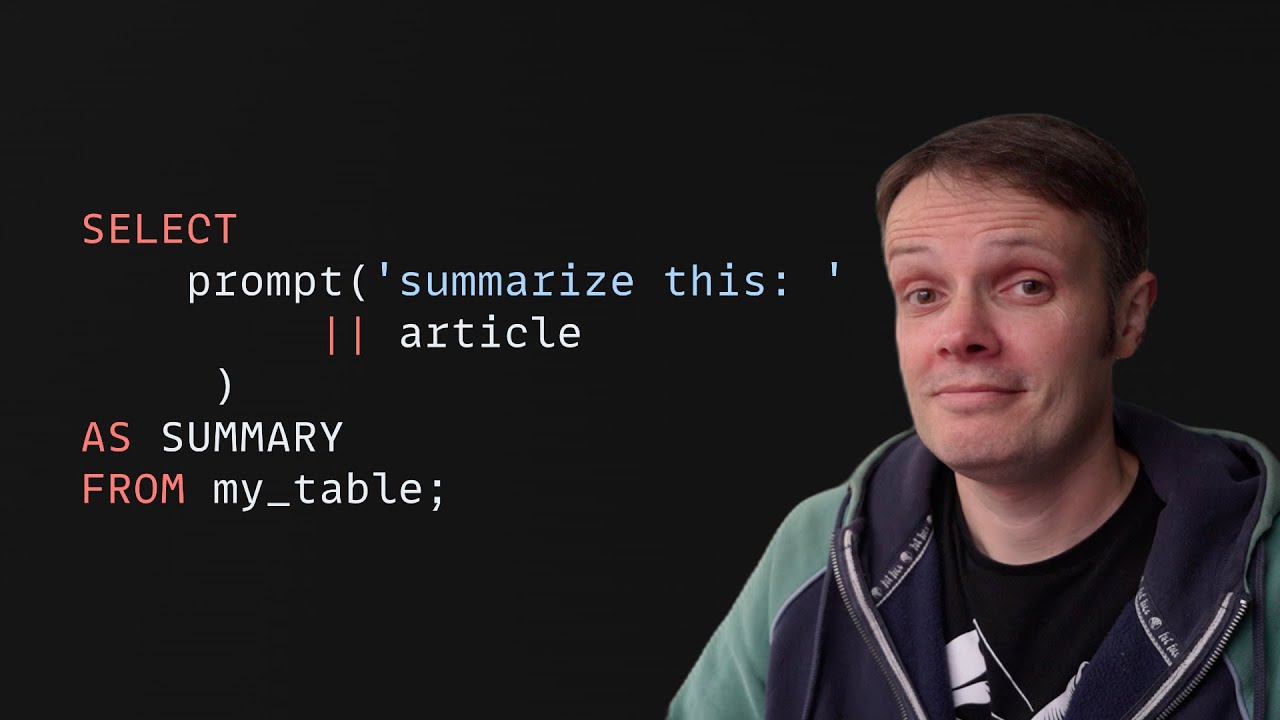The video demonstrates how to integrate large language models (LLMs) directly into SQL using a local implementation with SQLite, inspired by a feature from Mother Duck that allows users to summarize text from a database. The presenter showcases the process of creating a “prompt” function to call the OpenAI API for summarization and extracting structured data, emphasizing the potential for users to perform complex data analyses without needing extensive programming knowledge.
In the video, the presenter discusses how to integrate large language models (LLMs) directly into SQL, inspired by a tweet from Jason Matson, a developer advocate at Mother Duck, a cloud data warehouse provider. Mother Duck introduced a function called “prompt” that allows users to call an LLM to summarize text from a database of reviews. The presenter finds this feature intriguing and seeks to replicate it locally using their own database, exploring how to implement similar functionality without relying on cloud services.
The presenter explains that they discovered the possibility of using APSW, a Python wrapper for SQLite, to create a local implementation. They initially faced some challenges with the guidance provided by Claude, an AI assistant, which included incorrect suggestions. However, they managed to define a function called “prompt” that can be added as a scalar function in SQLite, allowing them to pass text to the OpenAI API for summarization. The example demonstrates how to insert data into the database and retrieve summarized results using SQL queries.
As the presenter runs the SQL commands, they showcase the output of the summarization process, highlighting the differences between the original text and the generated summaries. They also experiment with modifying the prompt to extract specific information, such as identifying programming languages mentioned in the text. This demonstrates the flexibility of calling LLMs from SQL and the potential for various applications in data analysis and retrieval.
The video progresses to a more complex example where the presenter aims to return structured data from the LLM, similar to what was demonstrated in the Mother Duck article. They explain that SQLite cannot handle structured responses directly, so they opt to serialize the data as JSON using a Pydantic model. This allows them to extract and utilize specific fields from the LLM’s response, such as topic sentiment and technologies used, enhancing the richness of the data returned.
In conclusion, the presenter emphasizes the significance of integrating LLMs with SQL, as it opens up new possibilities for users who may not be familiar with programming languages like Python. By enabling SQL queries to interact with LLMs, users can leverage their existing knowledge to perform complex data manipulations and analyses. The presenter shares that they have made the code examples available on GitHub, encouraging viewers to explore this innovative approach further.
